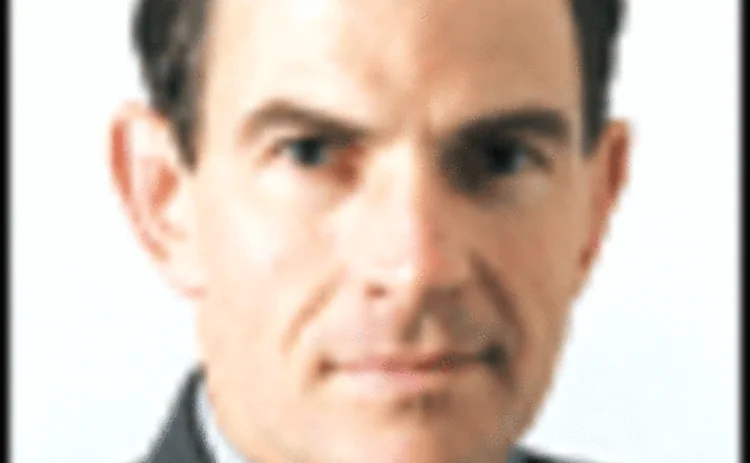
A spectrum of risks
Hong Kong conglomerate Swire Pacific has a finger in many pies, from airlines to sports shoes. That means it has to stay alert to a wide array of risks almost simultaneously. Martin Cubbon, the group’s finance director, talks to Saima Farooqi

Managing a conglomerate with as vast a portfolio of businesses as Hong Kong-based Swire Pacific is by no mean an easy task. Not only does the company have a 46% stake in Hong Kong’s flagship passenger carrier, Cathay Pacific Airways, it also holds a surfeit of investment properties, beverage businesses such as Swire Coca Cola, marine services, and trading and industrial divisions. This, and the size of Swire Pacific’s net assets, which by the first half of last year totalled HK$68.45 billion ($8.8 billion), gives some idea of the amount of responsibility Martin Cubbon, group finance director at Swire Pacific, has on his shoulders.
Within this vast array of business lies, not surprisingly, a vast array of risks that need to be managed. At one end of the spectrum is the airline business, which covers foreign exchange, jet fuel and interest rate exposures. In fact, Cathay has its own treasury department and finance committee, and Cubbon sits on the finance committee, which decides overall policy and strategy. “For the rest of Swire Pacific, however, life is actually a little bit easier,” he says.
Indeed, outside of the airline business, the majority of the firm’s costs and revenues are in Hong Kong and US dollars, and so consequently “those risks which follow from the mismatch in revenue and expenditure are actually not that much of an issue across most of our businesses”, he says. Nonetheless, where fundamental mismatches do exist, the firm has a policy of hedging these exposures. “If we have a fundamental mismatch, we have a policy that says we will go out and hedge it. We don’t want to take punts on currencies,” he notes.
Cubbon chairs the Swire Pacific finance committee, which meets quarterly to discuss business strategy, funding needs and risk management. “We think about strategy in terms of what direction the businesses are going in and therefore how we might adapt our policy, or what latitude we have in terms of funding risk, maturity mismatching and currency matching,” he says.
In fact, maintaining access to a wide variety of funding channels is one of the major preoccupations of the group. Whereas the firm relied primarily on the Hong Kong banking sector for cash up until the mid-1990s, Swire has tried to reduce the risks of overreliance on one funding source by tapping the global bond markets. “As you grow and develop you have to think about diversification of funding sources. Given our business is dominated by investment property in China, we took the view that that was going to pay back, but only in the longer term. So, we decided to lengthen the maturity profile, and to diversify our funding source,” explains Cubbon.
Indeed, this need for certainty outweighs costs to a certain extent – the company is willing to pay more to ensure it is able to access funds at all times. “Even though [capital markets] may be more expensive, there’s a reason for it because you’re assessing the risk of not being able to access the money when it’s needed. If you just say my job is to provide the lowest cost financing, I could go to the Hong Kong banks. But they might say tomorrow, I’m not lending money, then what do you do? The answer is you go bankrupt.”
The group uses swaps and forwards where necessary to match the interest rate profile of the firm’s portfolio if there is a mismatch. “The swaps market is a very deep market across a number of currencies and across a range of maturities, [so] you don’t have to try and fit the funding exactly to meet your needs in terms of interest rate risk. You could go to another market, use the swaps market, and cover that,” says Cubbon.
However, the use of options elicits a different response. “If there’s one market that is not so transparent and not so competitive, it’s the options market,” he says. “The underlying you’re trying to address can often be covered in a more transparent way. The swaps market, for instance, is very transparent, very easy.” Swire does use options in certain circumstances – where, for example, the group is in a tender process for a particular project. “I can take a forward which could be very expensive if I don’t win the contract or I can take an option which is expensive but it doesn’t commit me to taking that currency when I find out I don’t need it,” he says. “But you’re doing it because if you do win it, you want to make sure you can afford to deliver on the contract at the cost you assumed you’d be taking it.”
The group also uses forex and jet fuel options for its airline business, although Cubbon reckons the oil market is a little more transparent than the forex or interest rate markets. “In the oil market, we take a view that the options we are buying are no different in terms of value proposition that the underlying swap. In other cases, such as with Cathay Pacific, for example, it has a wide range of foreign currency coming in, so we use options to try and create some certainty. We are prepared to take in some upfront revenue by selling options and giving the bank the right to buy our currency at a predetermined rate.”
Nonetheless, the group would not consider zero-cost structures, where, for instance, a user would sell a put to finance the cost of a call. “What we won’t use options for is to give us some notional idea that we’re saving ourselves money. That to me doesn’t really make any sense because you’re inherently cross-subsidising what you really want,” he says.
Only users who have a paid subscription or are part of a corporate subscription are able to print or copy content.
To access these options, along with all other subscription benefits, please contact info@risk.net or view our subscription options here: http://subscriptions.risk.net/subscribe
You are currently unable to print this content. Please contact info@risk.net to find out more.
You are currently unable to copy this content. Please contact info@risk.net to find out more.
Copyright Infopro Digital Limited. All rights reserved.
You may share this content using our article tools. Printing this content is for the sole use of the Authorised User (named subscriber), as outlined in our terms and conditions - https://www.infopro-insight.com/terms-conditions/insight-subscriptions/
If you would like to purchase additional rights please email info@risk.net
Copyright Infopro Digital Limited. All rights reserved.
You may share this content using our article tools. Copying this content is for the sole use of the Authorised User (named subscriber), as outlined in our terms and conditions - https://www.infopro-insight.com/terms-conditions/insight-subscriptions/
If you would like to purchase additional rights please email info@risk.net
More on Markets
Buy side would welcome more guidance on managing margin calls
FSB report calls for regulators to review existing standards for non-bank liquidity management
Citi halves swaptions book with US retail funds
Counterparty Radar: Mutual funds and ETFs cut exposures by 22% in Q4
Who’s winning the €STR futures race? Depends how you measure
CME, Eurex and Ice all claim to be leading, but experts say it’s too early to pick a winner
CDS review seeks to tackle conflicts ‘elephant’
Isda AGM: Linklaters proposes overhaul for determinations committee - including independent members
Saudi Arabia poised to become clean netting jurisdiction
Isda AGM: Netting regulation awaiting final approvals from regulators
Buy side looks to fill talent gap in yen rates trading
Isda AGM: Japan rate rises spark demand for traders; dealers say inexperience could trigger volatility
JP Morgan’s new way to trade FX overlays
Hybrid execution method allows clients to put dealers in competition via a single trading agreement
Pension funds eye 30-year Bunds as swap spread tightens
Long-dated bonds continue to cheapen versus euro swaps, and some think they might fall further
Most read
- Top 10 operational risks for 2024
- Top 10 op risks: third parties stoke cyber risk
- Japanese megabanks shun internal models as FRTB bites







